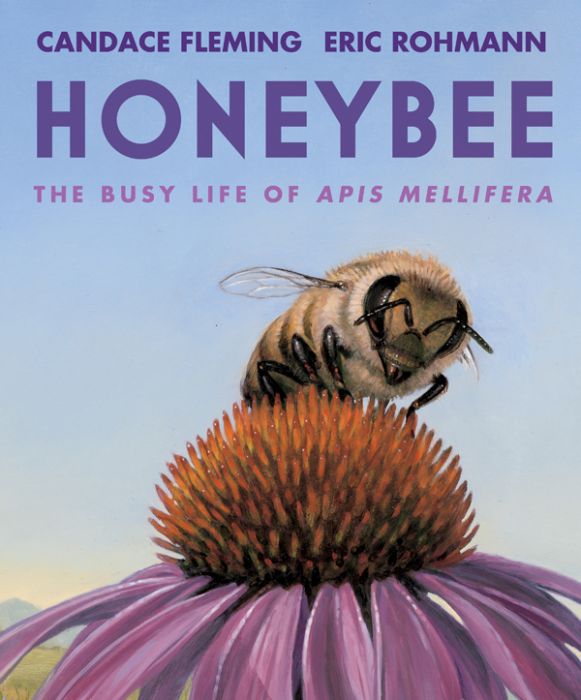
Honeybee: The Busy Life of Apis Mellifera
By Candace Fleming
Illustrators
Illustrated by Eric Rohmann
Edition
Publisher's Weekly Top 10 Best Pictures Books of 2020
By Candace Fleming
Hardcover edition
Publisher Holiday House Imprint Neal Porter Books ISBN9780823442850
Awards and Honors 2021 Sibert MedalPublisher's Weekly Top 10 Best Pictures Books of 2020
Honeybee: The Busy Life of Apis Mellifera
 10.75
10.75
Out of stock
SKU
9780823442850J
Beginning at birth, the honeybee emerges through the wax cap of her cell and is driven to protect and take care of her hive. She cleans the nursery and feeds the larvae and the queen. But is she strong enough to fly? Not yet! She builds wax comb to store honey, and transfers pollen from other bees into the storage. She defends the hive from invaders. Apis accomplishes all of this before beginning her life outdoors as an adventurer, seeking nectar to bring back to her hive.
Get up close and personal with Apis, one honeybee, as she embarks on her journey through life, complete with exquisitely detailed illustrations.
Get up close and personal with Apis, one honeybee, as she embarks on her journey through life, complete with exquisitely detailed illustrations.
|
Standard MARC Records Cover Art |
Nonfiction Early Elementary (Grades PreK-2)
Nonfiction Early Elementary
Nonfiction Early Elementary (Grades PreK-2)
For Grades PreK-2
This collection introduces early learners to science, history, animals, and more with 12 beautifully illustrated nonfiction books per year. With easy-to-follow narratives and interactive storytelling, these selections inspire curiosity and a love for learning.
12 books per Year
$254.88 per Year
Interests
Animals, Beginning Readers, Nonfiction, Picture Books, Science/STEAM, Storytime/Read Alouds




